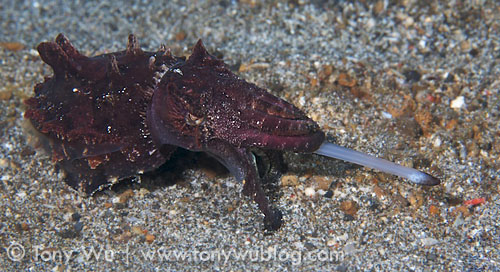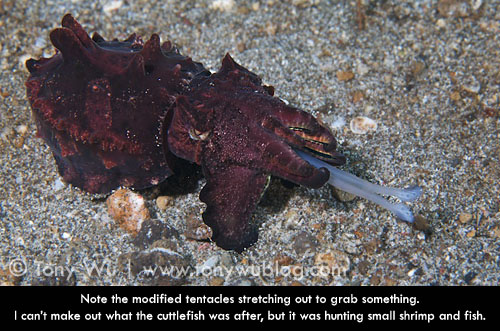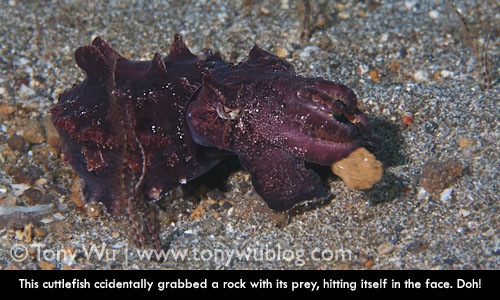Unlike other cuttlefishes, flamboyant cuttlefish don't swim as much as they walk...using their modified front appendages, clearly visible in the photo below:

In fact, these cephalopods aren't really able to swim well or for long. Perhaps they're evolving toward walking as a primary means of locomotion?
In case you've never seen one of these fascinating animals, the long, white protrusion is a pair of modified tentacles which the cuttlefish uses to reach out and grab prey.
They're stealth hunters, sneaking up on prey, reaching out ever-so-slowly with their tentacles, then striking with blinding speed to grab little fish and crustaceans...pulling victims into their gaping little maws.
Below is a shot of the tentacles...at the instant that they're reaching out to grab something. I looked closely at the full-size image, but I can't really make out what it's grabbing. It's possible that the intended meal fled to safety, or that it's too small and well camouflaged to make out.

As a side note, I visited Museum Victoria in Australia a few years ago and caught up with my friend Mark Norman, who is a cephalopod researcher (yes, such a career path does exist) and avid diver.
Besides showing me smelly preserved parts of giant squids (just picture the ear-to-ear grin on my face), Mark told me about a theory he had at the time, that these cuttlefish (and other brilliantly coloured cephapolods) might contain toxins...just like other animals in the sea that make use of brilliant colours, such as blue-ringed octopuses and nudibranchs.
He's since proven that the flesh of these animals does contain a powerful toxin.
Oh...here's a cuttlefish blooper: In this photo, the cuttlefish has just grabbed a small bite to eat, but accidentally also grabbed a rock in the process, snapping the rock back and hitting itself in the face!
